Last-Minute NYC Holiday Gift Guide 🎁
We’ve created a holiday gift guide with presents for the intrepid New Yorker that should arrive just in time—


Discover the rugged soul of the Meatpacking District through filmmaker Gregoire Alessandrini’s short film “Meat Market 1993”. The New York City film-maker and photographer produced the Meatpacking District video from salvaged clips of an experimental thriller that he created during his time as a student at CUNY in the ’90s. Alessandrini is now the executive video producer for Louis Vuitton. The film, shot on 16 MM Kodak Reversal Color Film, is set at the break of dawn, in the middle of the Meatpacking District. The warehouses are closed and there is not a person to be found — an odd sight for the city that never sleeps. Alessandrini says “It seemed like a gigantic set looking like an industrial ghost town and it felt like it was all yours to shoot.”
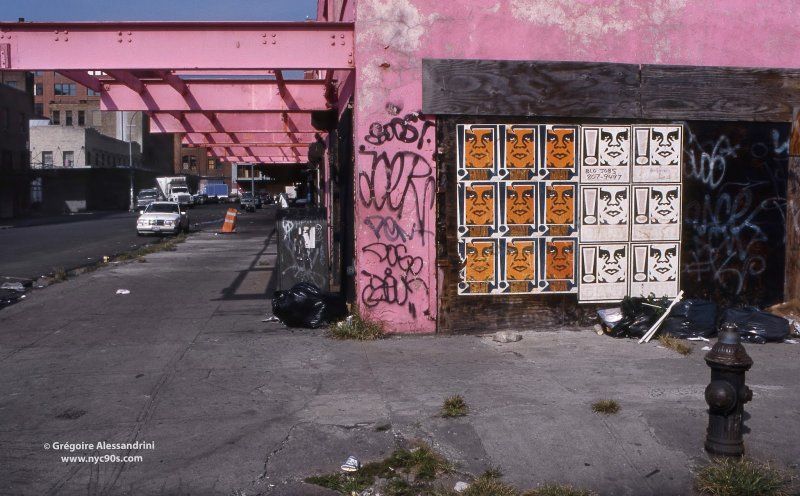
Meatpacking District in 1993. Photo by Gregoire Alessandrini
The morning stillness, however, is suddenly interrupted by a young man, rambunctiously swinging a baseball bat and bobbing his head to the soundtrack of rock and roll. He leads the viewer down the cobblestone alleyways and along the graffitied, brick warehouses of Washington Street. At the time, the Meatpacking District was a hub for society’s misfits: the stench of raw meat filled the air from local slaughterhouses while prostitutes strutted the streets at night. Clandestine meetings occurred amongst members of the gay community — homosexuality was illegal in New York State before the 1980 court case New York v. Onofre.
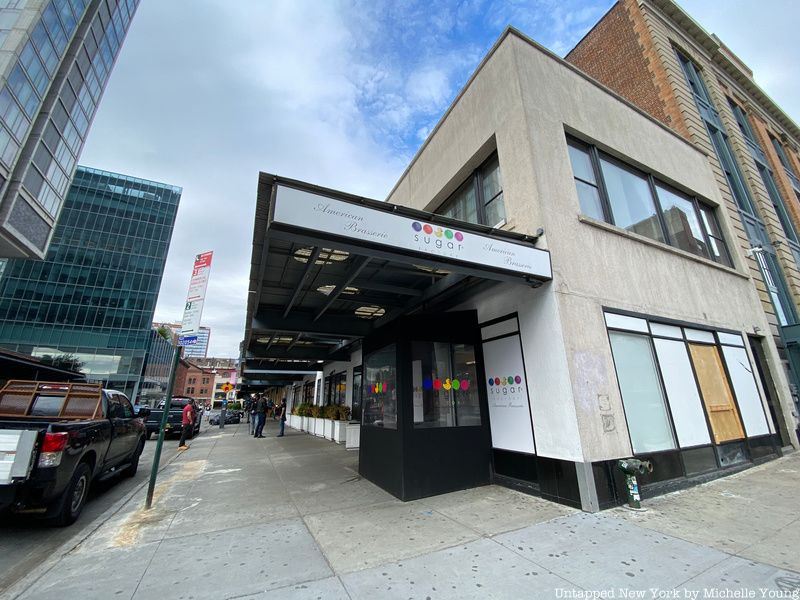
The same corner as the photo above by Gregoire Alessandrini, taken in June 2020.
However, within the scenes of “Meat Market 1993,” Alessandrini captures the lively spirit that animated Meatpacking District, “a fascinating area with its wild and raw atmosphere and the abandoned High Line all along.” As the man thrashes through the city blocks, we get a taste of the freedom that encompassed the area. The neighborhood was a haven for those who had no where else to go. The gritty environment was creative fuel that propelled the work of artists, such as Alessandrini himself.
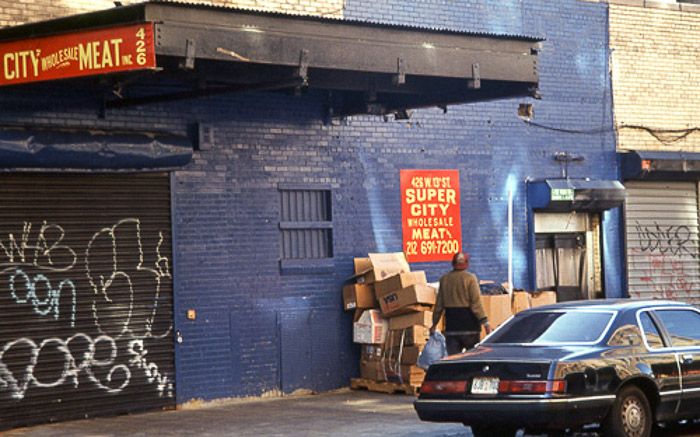
Super City Wholesome Meat Inc. in early 1990s. Photo by Gregoire Alessandrini

The same location today, with SUPER CITY signage retained
Today, the Meatpacking District has changed quite dramatically and we are only able to see the industrial anatomy of what it used to be. The butcher warehouses are now occupied by high-end stores and trendy restaurants. The smell of rotting meat has been masked by the fragrances of designer perfumes and these days, retail that closed down as a side effect of COVID-19.
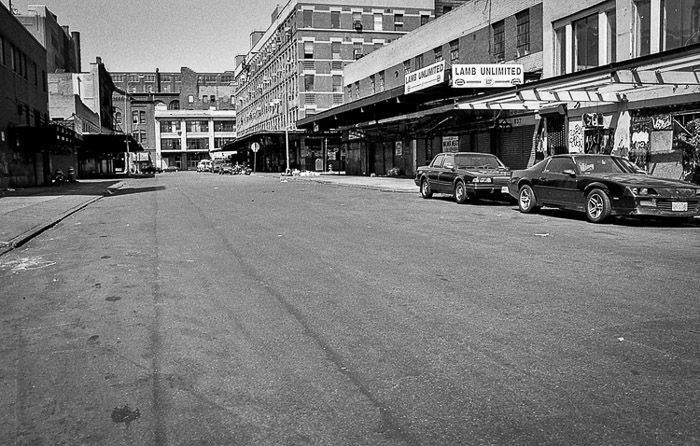
Washington Street in 1990s. Photo by Gregoire Alessandrini
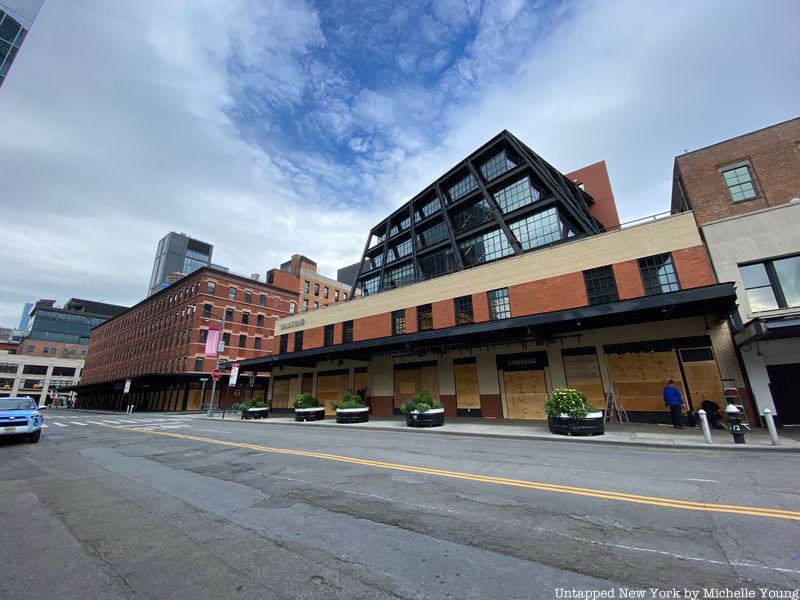 The same intersection on Washington Street as the photo from Gregoire Alessandrini above. This one taken in 2020 during in June during the pandemic
The same intersection on Washington Street as the photo from Gregoire Alessandrini above. This one taken in 2020 during in June during the pandemic
While many cosmetic improvements have been made to the Meatpacking District, Alessandrini questions the consequences of these alterations. “I have very mixed feeling about what it has become,” he admits, “I should obviously be happy to see it cleaned up, safe and lively and the exact opposite of what it was in the early ’90s but I find it very blend and boring with its luxury stores, and very expensive restaurants. It doesn’t seem like it is made for New Yorkers but more for wealthy tourists. It obviously couldn’t remain the way it was for very long, but I feel like a lot of this neighborhood’s soul was lost in this extreme gentrification and its homogenization process.”

Meatpacking District in early 1990s. Photo by Gregoire Alessandrini
The renovation of the Meatpacking District has undoubtedly depreciated the its eccentric essence. However, through Gregoire Alessandrini’s “Meat Market 1993,” we are transported back in time and the lost, unbridled soul is resurrected.
Next, check out vintage photos of Times Square of the 1990s also by Gregoire Alessandrini.
Subscribe to our newsletter